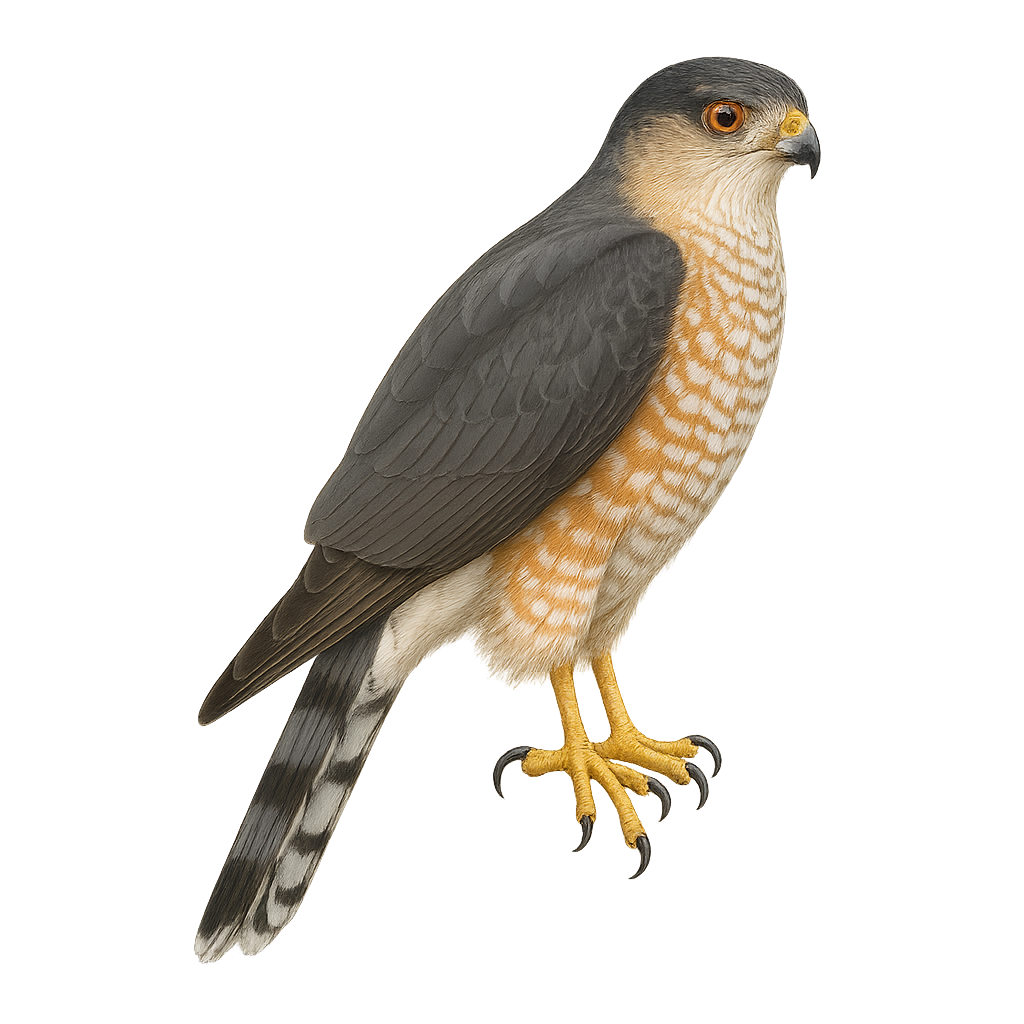Your wildlife photography guide.
Explore the sharp-shinned hawk in detail, study its behavior, prepare your shots.
Where to observe and photograph the sharp-shinned hawk in the wild
Learn where and when to spot the sharp-shinned hawk in the wild, how to identify the species based on distinctive features, and what natural environments it inhabits. The WildlifePhotographer app offers tailored photography tips that reflect the sharp-shinned hawk’s behavior, helping you capture better wildlife images. Explore the full species profile for key information including description, habitat, active periods, and approach techniques.
Sharp-shinned Hawk
Scientific name: Accipiter striatus

IUCN Status: Least Concern
Family: ACCIPITRIDAE
Group: Birds
Sensitivity to human approach: Suspicious
Minimum approach distance: 30 m
Courtship display: April to May
Incubation: 30-35 jours
Hatchings: May to July
Habitat:
Dense forests, wooded areas, forest edges
Activity period :
Primarily active during the day, with peak activity in the morning and late afternoon.
Identification and description:
The Sharp-shinned Hawk, a small raptor from the Accipitridae family, is an agile and swift hunter often seen in the dense forests of North America. It is characterized by its modest size, short rounded wings, and long barred tail. Its plumage is typically blue-gray above and rufous-streaked below. This predator primarily feeds on small birds, capturing them in flight with its acrobatic flying skills. Although discreet, it is sometimes spotted during its seasonal migrations. The Sharp-shinned Hawk plays a crucial role in controlling smaller bird populations, thus contributing to the ecological balance of its habitat.
Recommended lens:
400mm – adjust based on distance, desired framing (portrait or habitat), and approach conditions.
Photography tips:
To photograph the Sharp-shinned Hawk, it is advisable to use a telephoto lens of at least 400mm to capture detailed images without disturbing the bird. Look for places where it hunts, such as forest edges or clearings. Be patient and discreet, as this bird is suspicious. Use a tripod to stabilize your camera and wait for the right moment to capture its fast and agile flight. Morning or afternoon light can provide ideal conditions for well-lit and contrasted photos.
The WildlifePhotographer App is coming soon!
Be the first to explore the best nature spots, track rutting seasons, log your observations, and observe more wildlife.
Already 1 432 wildlife lovers subscribed worldwide

